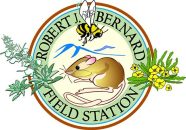Ng, Lina (2006)
The Effects of Invasive Competition and Seed Limitation of the Restoration of Native California Forbs.
Bachelor of Arts in Biology.
Advisor: Diane Thomson.
Non-indigenous species invasions are among the greatest threats to global biodiversity, and California grasslands are a prime example. It has generally been assumed that invasive plants are dominant in California grasslands because they have a competitive advantage over natives. However, recent research has suggested some native species may be able to compete with invasives but are limited by low seed dispersal and seed abundance. The questions asked in this study were: 1) Are native forb species limited in grassland habitats at the BFS by seed abundance? and 2) Are invasive species better competitors than two native plants found in low abundance at the BFS, Camissonia bistorta (California Sun Cup) and Clarkia purpurea ssp. quadrivulnera (Four Spot). I set up both a field experiment and an experiment in containers to answer these questions, but the field experiment could not be completed due to low early winter rainfall. In the container experiment, I established three different treatments: native grown alone, exotic grown alone, and native and exotic grown in mix. I repeated this experiment for two combinations of native and invasive plants: Bromus with Camissonia and an unknown invasive grass with Clarkia, I found that Bromus alone had a higher percent cover per pot when grown with Camissonia than when grown alone, but there was no corresponding negative effect on Camissonia percent cover. Both Bromus and Camissonia had smaller plant sizes in the mix than when grown alone, but neither species was more strongly affected than the other. Clarkia actually out-competed the unknown grass species, as measured both by percent cover and average plant size. These results support the idea that competition is not the only factor causing low abundance of native forbs in grasslands and that limited germination rates in certain native forbs may be a key factor to address in restoring native abundance to invaded areas. However, further research under more realistic field conditions is needed to determine which factors are most important in causing invasive dominance in California grasslands.
